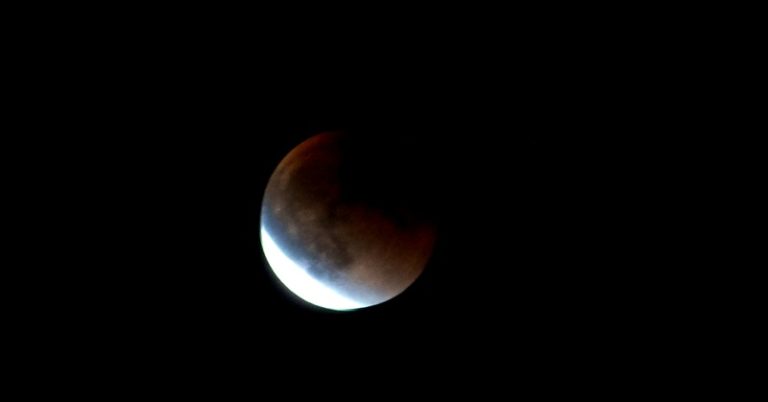
During a lunar eclipse, which happens at night, the Moon gets covered by the Earth’s shadow. What’s the difference between a lunar eclipse and a solar eclipse? Both events involve three celestial bodies: the Sun, the Earth, and the Moon. It’s the least noticeable type of eclipse: for a keen-eyed observer, the Moon will look only slightly darker than usual. During this type of eclipse, only a portion of the Moon gets dark and reddish.Ī penumbral lunar eclipse occurs when the Moon passes through the penumbra - the outer part of the Earth’s shadow. This happens when the Sun, the Earth, and the Moon are not perfectly aligned. Because of the distinctive reddish hue, a total lunar eclipse is often called a Blood Moon.Ī partial lunar eclipse occurs when only a part of the Moon gets covered by the Earth’s umbral shadow. Our planet’s atmosphere scatters the blue-colored light but lets the red-colored light through. Why does it happen?Īlthough the Earth blocks all direct sunlight, a small portion of the light gets refracted by the Earth’s atmosphere and reaches the Moon’s surface. Interestingly, our natural satellite doesn’t completely disappear during a total eclipse but turns dark red. The Earth comes between the Moon and the Sun and covers the entire Moon with the inner part of its shadow, called the umbra. It happens when the Sun, the Earth, and the Moon are precisely aligned in space. There are three types of lunar eclipses: total, partial, and penumbral.Ī total lunar eclipse is the most spectacular of the three types. Watch our short explanatory video to better understand how lunar eclipses work.

If their alignment is not exact enough, observers will see a partial or penumbral lunar eclipse - or no eclipse at all. If the Earth, the Moon, and the Sun form a straight line, a total lunar eclipse occurs.
#NEXT LUNAR ECLIPSE FULL#
This can only happen during the Full Moon phase.


Why is the Moon red during a lunar eclipse?Ī lunar eclipse occurs when the Earth fully or partially blocks the Sun’s light from reaching the Moon.Learn what types of lunar eclipses there are, why they occur, and when the next lunar eclipse happens. The light from the sun is what normally causes the moon to shine, so when the moon passes into Earth’s shadow, the lack of direct sunlight causes the moon to dim.A lunar eclipse is one of the most breathtaking astronomical events - our natural satellite gets engulfed by the Earth’s shadow and changes its color to red. What exactly is a total lunar eclipse?Ī total lunar eclipse, which is one of three types of lunar eclipses, occurs when the moon moves directly into the inner part of the earth’s shadow - known as the umbra - completely blocking the sun from the moon. The spectacle only happens when the moon is full, and lasts for a few hours.Īndrew Humphrey said It will be mostly cloudy and stormy, so the event will be tough to witness. During this time, the moon will darken and appear to turn a reddish color as it reflects light from the earth.Ī total lunar eclipse typically only occurs twice every two-and-a-half to three years. Tonight (Sunday) the moon will cross directly into Earth’s shadow, blocking it from the sun completely. If we get enough of a break from the clouds tonight, we’re in for a late-night treat: A total lunar eclipse!


 0 kommentar(er)
0 kommentar(er)
